Post-Impressionism was an art movement that roughly lasted from 1886 to 1905, from the end of Impressionism to the start of Fauvism. It included artists such as Paul Cézanne (the “father of Post-Impressionism”), Vincent van Gogh and Georges Seurat.
The movement was generally an extension of Impressionism, but with more focus on the artist’s subjective feelings about a subject. In this post, you will learn about the key facts, ideas and master artworks from the movement. I cover:
- Key Facts and Ideas
- A Closer Look at Post-Impressionist Art
- Figurehead Artists of Post-Impressionism
- Additional Readings
- Want to Learn More?
- Thanks for Reading!
“We must not be content to memorize the beautiful formulas of our illustrious predecessors. Let us go out and study beautiful nature.” Paul Cézanne

Key Facts and Ideas
- It emerged around 1886 as a rebellion by individual artists in France who were frustrated by Impressionism’s lack of emotional and subjective meaning. Post-Impressionists wanted to place more focus on the subject itself, rather than just trying to capture the fleeting light and color.
- The term “Post-Impressionism” was coined by artist and critic Roger Fry when he organized an exhibition called, “Manet and the Post-Impressionists”. The exhibition showcased Édouard Manet along with younger, less renowned artists.
“For purposes of convenience, it was necessary to give these artists a name, and I chose, as being the vaguest and most non-committal, the name of Post-Impressionism. This merely stated their position in time relatively to the Impressionist movement.” Roger Fry

- Post-Impressionists were not a unified group working toward a common goal, but rather a group of individual artists loosely connected by their dissatisfaction of Impressionism.
- They took advantage of bright colors and bold strokes, much like the Impressionists did, but with a more organized and structured approach. Cézanne, in particular, claimed he wanted to “make of Impressionism something solid and durable, like the art of the museums”.

- Georges Seurat, a prominent member of Post-Impressionism, took a scientific and systematic approach to color. He painted with small dots of distinct color under the misconception that this would make his paintings appear brighter and more luminous: a technique known as pointillism. Seurat was also connected with other art movements such as Neo-Impressionism and Divisionism, which seem to be subsets of Post-Impressionism (all the “isms” make art history a very confusing area).

A Closer Look at Post-Impressionist Art
Below I take a closer look at some of the master Post-Impressionist artworks to give you an idea of the typical characteristics and traits.
First, At the Moulin Rouge by Henri de Toulouse-Lautrec. This is a busy composition with unusual colors, bold shapes and strong use of outlining. The painting almost has a cartoonish feel to it.
The lady on the right-hand side was painted with sickly greens and yellows, which contrast against the rich red used for her lips. These colors appear to be symbolic of raunchy and lustful cabaret, rather than realistic.
Toulouse-Lautrec painted the lady directly on the frame of the painting, with part of her body cropped out. This adds a sense of awkwardness to the painting and breaks many of the composition “rules”.
Tip: Most of the time, it makes sense to follow the standard rules of composition; they exist for a reason. But, you could make a powerful statement in your painting by breaking those rules. That is what painting is all about: building up a sense of expectation and regularity, then breaking it up.
“Everywhere and always ugliness has its beautiful aspects; it is thrilling to discover them where nobody else has noticed them.” Henri De Toulouse-Lautrec

Below is a painting from Vincent van Gogh’s Sunflowers series. It features the bold colors and strokes which were typical of both the Impressionists and Post-Impressionists. There is a sense of order and structure about the painting. The edges are hard, the shapes do not overlap and there is some outlining to reiterate the shapes (the vase and the blue line in the background which marks the bottom of the wall). Also, notice how van Gogh’s signature, “Vincent” forms part of the flower vase.
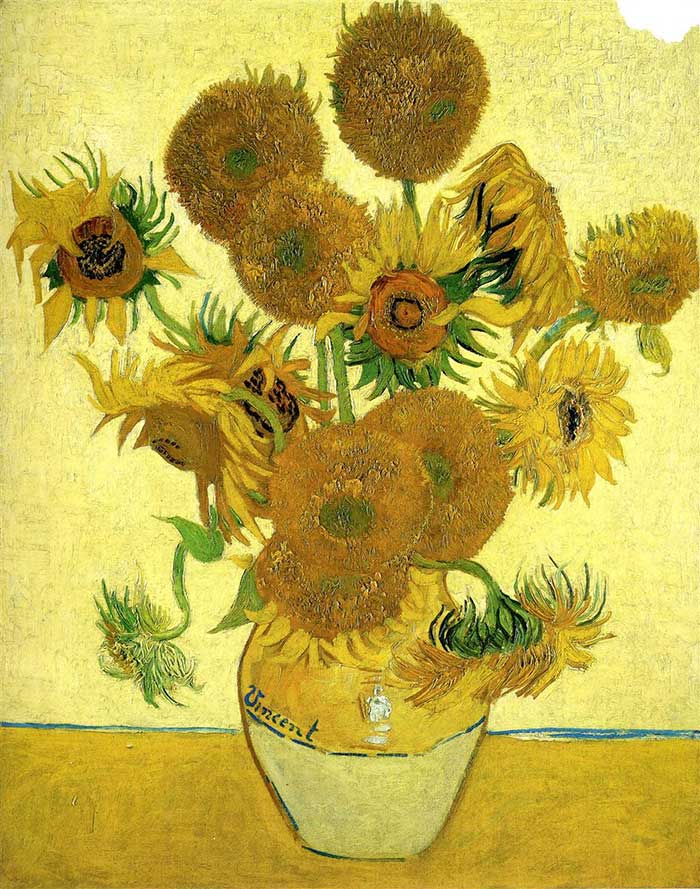
On an interesting note, below is a painting by Paul Gauguin depicting van Gogh painting his sunflowers.
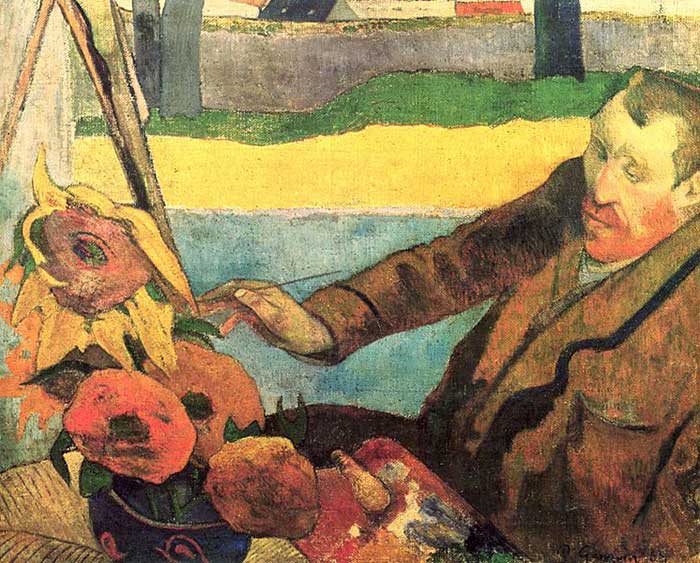
Paul Cézanne, the “father of Post-Impressionism”, favored geometric forms in his paintings. He also used a duller color palette compared to many of the other Post-Impressionists. Below is one of his paintings from his Mont Sainte-Victoire series. Notice the organized use of color shapes throughout the painting.

Cézanne’s unfinished work below gives you an idea of how he went about a painting: by filling the canvas with distinct color shapes until form took place. This emphasis on shape is what gives many of his works that rigid and structured feel.

Below is another painting by Cézanne which depicts “the card players” focused on their game. Restricted colors and strong shapes were used. Notice how you can even make out loose shapes of color on the wall in the background. The clothing and curtains have a rigid appearance, rather than the loose and flowing appearance which you might see in a painting by Joaquín Sorolla or John Singer Sargent.

In Charles Laval’s self-portrait, there is an interesting contrast between the muddy oranges and blues used for his body and the clean, pastel colors used for the surrounding environment which you can see through the window. Strong, vertical brushwork was used on the right-hand side to suggest the presence of the glass window. Glass is a difficult object to paint because it is not only transparent but also partially reflective (hence why you can see dull oranges, blues and green in the window).
As with many of the other Post-Impressionist works, strong outlining was used to depict form, particularly for the tree through the window. Outlining can give a painting a very stylistic appearance, but it is not how we see most things in life. Most of the time, one shape ends and another starts, without there being a neat, dark line to mark the transition.

Figurehead Artists of Post-Impressionism
Below are some of the figurehead artists of Post-Impressionism:
- Paul Cézanne
- Édouard Manet
- Vincent Van Gogh
- Georges Seurat
- Paul Gauguin
- Henri de Toulouse-Lautrec
- Henri Rousseau
- Edouard Vuillard
- Paul Signac
- Charles Laval
- Pierre Bonnard
- Émile Bernard
- Théo van Rysselberghe
- Odilon Redon
- Charles Angrand
- Georges Lemmen

Additional Readings
Impressionist Art Movement – Masters Of Light And Color
A Closer Look at the Mont Sainte-Victoire Series by Paul Cézanne
A Closer Look at A Sunday Afternoon on the Island of La Grande Jatte by Georges Seurat
Want to Learn More?
You might be interested in my Painting Academy course. I’ll walk you through the time-tested fundamentals of painting. It’s perfect for absolute beginner to intermediate painters.
Thanks for Reading!
I appreciate you taking the time to read this post and I hope you found it helpful. Feel free to share it with friends.
Happy painting!
Dan Scott

Draw Paint Academy

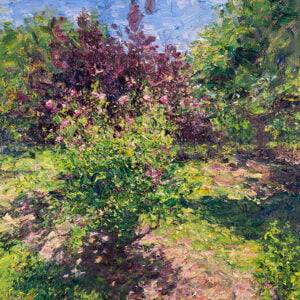
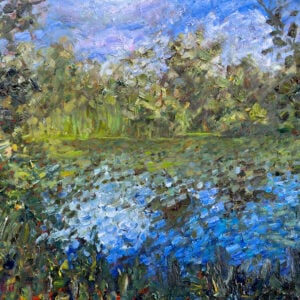


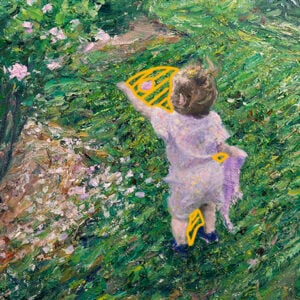
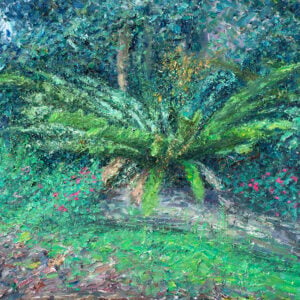
Thank you so very much for this amazing information. Worth its weight in gold❤️
I love your impressions of Post Impressionism! You put a lot of thought and effort in this; it flows well in thought and demonstration from the pictures of their work. I appreciate the historical context. I hadn’t understood the difference of intent between Impressionism and Post Impressionism which you beautifully demonstrate. Thank you!
Love your posts. Thanks so much!
Thanks Dan – really helpful
Very informative and interesting. Thank you.
Love this information?
Another really great post. Thank you Dan.
I don’t remember ever seeing Cezannes flowers in a vase before.
Bonnard has always been a favorite.
Thanks again.
Great stuff, watching from Spain.
Thank you I enjoyed it!
Great information, well presented. Thank you.
Hi Dan, Thanks for the post.
Some of this stuff appeals to me and some doesn’t, no dis respect intended
to some of the greats.
I guess we don’t all have the same tastes.
I do however appreciate your insights on the matter.
Keep ’em coming Dan.
Dave M. ???
Hi,
More interested post…. Thank you
New subscriber to your posts, I love this one and the easy to understand review of the differences between impressionism and post. thanks keep up the good work
I look forward to opening my Email to your name as I know I will learn something new. You present your information in such an interesting way I want to copy each post so as not to forget.
Love your posts! I learn so much. The picture quality is so great with your artist examples- you can really zoom in and look. I was astonished at how beautiful and textured Van Gogh’s “Still Life-Vase with Fifteen Sunflowers “ is when looking closely. Wow.
Studying art was one of the toughest subject during my architecture collegiate years. Although I know that art is just a branch of the architecture profession, but it can’t be taken lightly. I have to deal with studying different art movements because the connection is quite similar into designing an interior space. Likewise, an artwork from any art movement belongs to a space that would highlight its glamorous features and its artist. Without art, the world is probably a huge boring space.
I notice at the bottom of Mr. Laval’s self portrait the name Vincent is there…and the painting seems to emulate Van Gogh’s style…is this an homage?